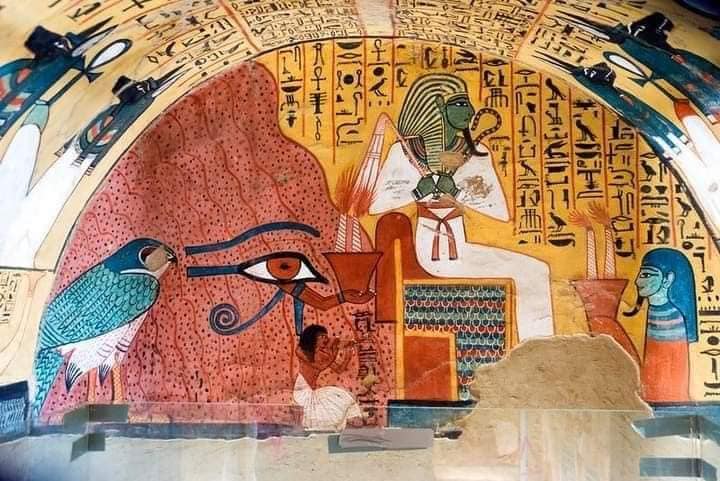Egypt Magic [1534]
Snakes in ancient Egypt
The snake was worshipped in many forms. It played a remarkable role in the ancient Egyptian religion: This was due to its association with eternity and the renewal of life, due to what the ancient Egyptians had touched from the life of the snake. The snake expressed a meaningful symbol of life. It was not sacred to the shape of its captivating body but rather for the emanating energy of this twisted being that transcends its boundaries to affect the surrounding world. Snakes are an eternal thing that comes from the depths of water where life begins. Therefore, ancient scholars noticed that the primitive man consecrated the snake Totem as one of the animals that he found in his environment. It is agreed upon that it was fear and terror that drove the ancient Egyptians to reverence these terrifying creatures, and the snake of Al-Nashir (The Sole) is the most dangerous of the two snakes in the Egyptian’s view. Hornung believes that it is the form in which the idol appeared to humankind that led to the emergence of the active worship of this idol, and for that, the ancient Egyptians imagined the appearance of the worship in its best form. Sacred qualities, as well as the perception of the existence of the enemies of this idol on the distant depths such as Aab enemy idol sun, so the enemy snake that grows and extends daily from head to catch Bmabboud the sun and fails in it and come back again to Nothingness or able idol of it, and the elimination of him to cut off his head. Hornung adds that the whole circle of the snake’s body was depicted as surrounding the world to separate existence from non-existence, and in the modern state, there are images in the books of the lower world, such as a book of what is in the world. It was also associated with the male serpent in ancient Egyptian mythology eye that came out the idea of existence as the eye of Horus, the heavenly deity, and is the third eye in addition to the eyes of the idol and represent the snake cobra installed in the crown or headband on the forehead of the king. Next to the legend, the Egyptian record his relationship with Baltaban engraved on Plaques of the kohl dish and the walls of the tomb, where scenes of other life are filled with snakes, which he imagined in many forms, “many turns and folds, and the legs and the legs and the legs and arms and heads of a human.” Also, deities appeared in their figures as snakes, such as “Wajit, Rinnet and Nesrt,” without neglecting the literary papyri that the snakes had a role in. The snake had its place in Egyptian jewellery as well. The first mention of the snake was in the First Age of Transition, where the snake worshiper Apophis was considered the enemy of the system or the community. The farmers used to leave the snakes in the fields without attacking them: to help them kill the mice, as for the snakes to come out during the harvest season, they heralded the good of the harvest, so they were terrified. The Egyptians used to draw snakes on the walls of graves: for their belief that many snakes intercept humankind on his journey in the other world as evil powers and their virulence. He cannot resist them: Face enemies. She had also depicted on the coffin walls with her head separated from her body: due to the fear of the deceased when she came to life in the cemetery. And as an expression of something meaning for the ancient Egyptian who expressed the “ns” tongue in the Egyptian writing with the tongue of a snake. As for the ancient Egyptian’s observation of the snake’s body, we find a clear influence in his art, as he excelled in his engraving and sculpture: for his belief that the living spirit of the story is diminishing his works and as a result of nature.


Comment (0)